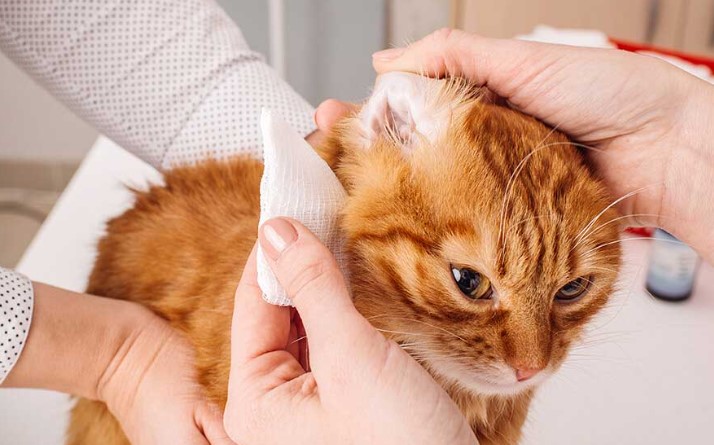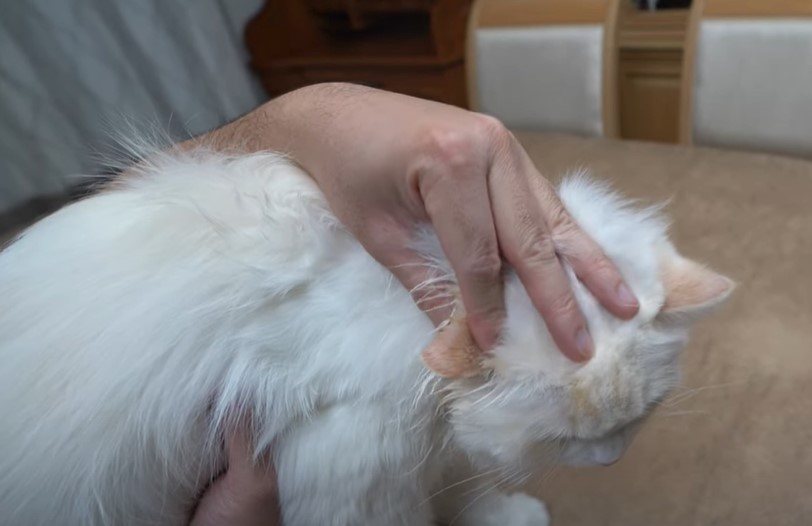Cleaning your cat’s ears is an essential aspect of feline hygiene that often goes overlooked. Regular ear maintenance helps prevent infections, discomfort, and potential hearing issues. This guide provides a detailed walkthrough on safely and effectively cleaning your cat’s ears, ensuring their well-being and comfort.
Understanding the Importance of Ear Cleaning
Cats are generally meticulous groomers, but their ears can accumulate dirt, wax, and parasites like ear mites. Regular ear checks and cleaning can prevent:
- Infections: Buildup of wax and debris can lead to bacterial or yeast infections.
- Discomfort: Accumulated debris can cause itching and irritation.
- Hearing Loss: Severe infections may impact hearing if left untreated.

Signs Your Cat’s Ears Need Cleaning
Before initiating cleaning, look for these indicators:(BarkleyAndPaws)
- Frequent scratching or pawing at the ears
- Head shaking or tilting
- Redness or swelling inside the ear
- Unpleasant odor emanating from the ears
- Visible dirt, wax, or discharge(BarkleyAndPaws)
If any of these signs are present, it’s advisable to consult your veterinarian before proceeding with cleaning.
Preparing for the Cleaning Process
Gather Necessary Supplies
- Ear Cleaning Solution: Use a vet-approved product specifically designed for cats.
- Cotton Balls or Gauze Pads: For wiping away debris.
- Towel: To gently restrain your cat if necessary.
- Treats: To reward your cat post-cleaning.
Create a Calm Environment
Choose a quiet, comfortable space to minimize stress for your cat. Having a second person to assist can be beneficial, especially if your cat is uncooperative.(BarkleyAndPaws)
Step-by-Step Guide to Cleaning Your Cat’s Ears
This section walks you through each stage of safely cleaning your cat’s ears, from inspecting them for dirt or infection to applying a gentle cleaning solution, massaging the ear base, and wiping away loosened debris. It’s designed to be simple, stress-free, and effective, even for first-time pet owners.

1. Inspect the Ears
Gently hold your cat and examine the ears for any signs of dirt, wax, or infection. If you notice anything unusual, consult your veterinarian before proceeding.
2. Apply the Cleaning Solution
Follow the instructions on the ear cleaning solution. Typically, you’ll place a few drops into the ear canal. Avoid inserting the applicator too deeply.
3. Massage the Base of the Ear
Gently massage the base of the ear for about 20-30 seconds. This helps the solution break up any debris inside the ear canal.
4. Let Your Cat Shake
Allow your cat to shake its head. This action helps bring the loosened debris to the outer part of the ear.
5. Wipe Away Debris
Use a cotton ball or gauze pad to gently wipe away any visible dirt or wax from the outer ear. Avoid using cotton swabs, as they can push debris further into the ear canal.
6. Repeat on the Other Ear
Follow the same steps for the other ear, ensuring both are clean and free from debris.
Aftercare and Monitoring
After cleaning, observe your cat for any signs of discomfort or irritation. If your cat continues to scratch or shake its head excessively, consult your veterinarian.
Tips for a Stress-Free Experience
- Start slow and be gentle to build your cat’s trust.
- Use treats to create positive associations with ear cleaning.
- Regularly check your cat’s ears to catch any issues early.
FAQs On How to Clean a Cat’s Ears
Q: How often should I clean my cat’s ears?
A: Generally, once a month is sufficient, but some cats may require more frequent cleaning.
Q: Can I use human ear cleaning products on my cat?
A: No, always use products specifically designed for cats to avoid irritation or harm.
Q: What if my cat resists ear cleaning?
A: Take breaks, use treats, and consult your vet for advice on handling a resistant cat.
Final Words
Regular ear cleaning is an essential part of your cat’s health care. By following these steps and tips, you can ensure your feline friend’s ears remain clean and healthy..


